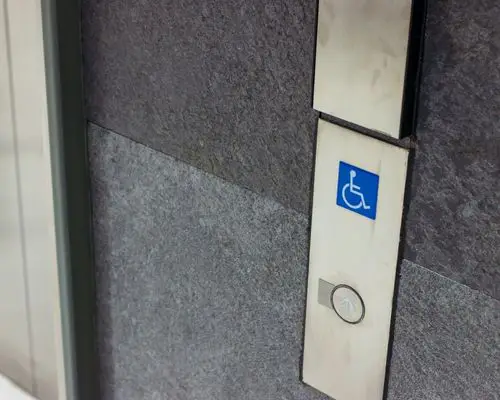One of the worst decisions anyone would ever have to make would be whether to move out of their beloved home due to mobility issues. If you’re in love with where you live but find it hard to tackle the stairs then you could be fooled into thinking that you only have one choice; sell up and buy a single storey property.
But that isn’t necessarily your only option. You might be able to install a home lift which will make using all floors of your home easy once again.
Of course, something like building a domestic lift does make you think that you’ll have to drain your bank account. I won’t lie, this isn’t the cheapest installation you’ll ever make but it’s a lot more affordable than moving home, and less hassle. So, how much does a home lift cost? Let’s find out.
What Is The Cost Of A Home Lift In The UK?
How much you pay for a home lift installation will largely depend on the type of lift you choose. If additional work needs to be undertaken such as structural changes or redecoration afterwards, this is going to boost the cost. However, many of the most reputable companies in the UK promise that the installation won’t interfere with your decor.
Hydraulic Home Lifts
If you choose a through floor hydraulic lift then you can expect to pay somewhere between £23,000 and £28,000.
These lifts work when the pump sends hydraulic fluid to the jack which moves the lift via a piston at the base. It’s important to keep in mind that this is one of the largest types of home lift and so you’ll need to ensure that you have enough space for the installation.
The reason for this is that not only is the lift larger than other types but there’s also a need for a machine room which is separate from the lift itself.
On top of this, you must remember that hydraulic lifts are typically more high maintenance so the ongoing costs are likely to be much higher.
Traction Home Lifts
Even more expensive than the hydraulic lift is the traction lift. These could cost you anywhere up to around £33,000.
In this type of installation, your lift is moved between floors using a counterweight and cables. These cables must be regularly replaced, typically every five years so there will be associated maintenance costs.
Vacuum Home Lifts
The vacuum home lift is again more expensive than the hydraulic design and prices generally start at around £28,000.
The air pressure both above and below the lift is different and through the use of turbines and pumps, there is movement. The great thing about these lifts is that there is no need for a hoist or a pit so they tend to take up less space and require less maintenance.
Non Hydraulic Home Lifts
One of the newest and most innovative types of home lift is the non hydraulic lift. These are great for small spaces as they’re much more compact and work using a motor drive system which is totally self contained. That said, many companies also offer larger models for those who need to accommodate their wheelchair or other equipment.
Moreover, many of these lifts can be connected to a regular 17 amp socket so there won’t be a ton of electrical work required during the installation. These lifts start from around £15,000 so are one of the most affordable options as well.
What Is A Home Lift And Who Would Benefit From One?
Home lifts or domestic lifts are stand-alone lifts designed to move the user between the various floors in the home.
For people with limited mobility, these lifts are an excellent way to remain in your home and make the most of all floors. A lot of people, especially older adults whose mobility has deteriorated, find that they are no longer able to use the upper levels of their house.
Home lifts come with very generous weight limits, usually up to around 500kg. The benefit of this is that they can carry not only the user but carers, wheelchairs and any other equipment, provided they are spacious enough. Of course, there are lots of choices in terms of size on the market.
Whether you need a home lift for inside the house or outdoors, there are options that will suit your needs. A lot of people find that a home lift is an elegant, modern and more convenient option compared to something like a stairlift.
Home lifts are a wonderful choice for people that want to remain in their home despite any mobility issues they may have. While they can be expensive to install, home lifts are usually much kinder on your bank balance than moving home. What’s more, if you do ever decide to leave the property, most lift companies can uninstall and reinstall at your new home.
How Long Does It Take To Install A Home Lift?
You could be forgiven for thinking that installing a home lift would involve a lot of work. But quite the opposite is true.
In fact, a lot of UK home lift providers promise to complete the installation in as little as two days. For simpler projects, it may only take a single day. However, it’s important to speak with your chosen company to get a better idea of how long the installation will take.
If there is any additional work that needs to be carried out, this will naturally increase the length of time it’ll take to complete the work.
Conclusion
A home lift can be a life changing piece of equipment. For those with mobility issues, it’s a way of being able to remain in the home and still make use of all the available space. These lifts can be expensive but they’re a long term solution that’s a lot more affordable and less complicated than moving home.
Some of the cheapest home lifts can be purchased and installed for as little as £15,000. However, for more complex or larger equipment, you may need to pay up to £33,000.

